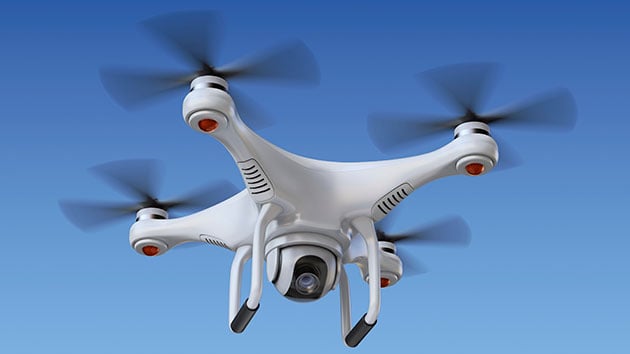
Drones Are Going To Change the Landscape in the Oil&Gas Industry.
Drones are opening a new technological frontier towards modernizing the oil and gas industry. Drones are unmanned aerial vehicles (UAV) which are remotely operated. Autonomous vehicles are however not new to the industry as construction and inspection teams dealing with offshore underwater or subsea projects use ROV's or remote operated vehicles to perform tasks in deepwater out of the reach of divers. The feasibility of drones to be used in the oil and gas industry was first studied by BP and California based drone manufacture AeroVironment back in 2006 with the aim of drones being used in the icy oil fields of Prudhoe Bay in Alaska. It took the companies more than 7 years to get FAA approval and airworthiness certificates simply because existing laws weren't adequate to support UAV use for commercial purposes.
- The use of UAV to survey and capture geospatial data is significantly more efficient and a cheaper alternative to conventional methods. Conventional methods of mapping geospatial data include aerial photography and ground based surveying or even utilizing LiDAR (Light Detection & Radar) is time and cost consuming to perform. The approval permits for a fly zone or access to areas on the ground can further hinder the ability to conduct surveys quickly and efficiently. Even mapping assets on land owned by the exploration and production companies can be painstakingly inaccurate as thickets and hedges impede the ability to get good images of the condition of the assets. At sea, the process of aerial survey is subjected to flight time limitations and weather which oftentimes delay the survey campaign longer than necessary.
- Drones potentially eliminate most accessibility and flight time issues simply by being more flexible. Drones can fly for a certain hours, recharge in about double its flight time and continue flying again. It can be deployed at location and it can carry LiDAR or be changed to camera view on site within a couple of minutes giving it the flexibility to perform any type of aerial reconnaissance.
- The introduction of UAV's into inspection campaigns significantly improves the effectiveness of the inspection being performed. One of the most talked about usage of drone technology is to inspect flare stacks, which using an UAV, inspection can be performed without turning off the flare operation saving almost USD 1 million a day in operational costs.
- UAV's can perform visual inspection from nearer distance without risking the asset or lives of inspectors to perform the inspection. UAV's can also perform general visual inspection on any structural or mechanical members especially where height is concerned without the need of additional permits or safety consideration conventionally required for inspection using rope access by inspection personnel. This gives UAV's significant advantages against conventional methods.
- UAV's are going to be playing a more important role in disaster, environmental, and safety assessment without risking the life of personnel to perform the required tasks. Gas emissions or leak monitoring can be performed safely from a distance before any personnel is put into action to perform rectification or modification on any section of the rig, plant or refinery. UAV's can be fitted with various sensors and gas detectors which will detect potential hazards and provide better risk assessment to safety officers before approving work permits. This method not only saves lives but also minimizes the risk of any potential incident that might lead to asset damages. UAV's are also playing a significant role in performing environmental survey on oil companies assets and indentifying potential environmental impact their assets have on the wildlife in the surrounding habitat.
The advantages of UAV's in the oil and gas industry will significantly change how assessment and inspection are performed. UAV's makes the process significantly more valuable simply by providing more accurate insight and reasonably reducing cost and safety issues which are associated with more conventional methods. The industry is adapting with more companies joining AeroVironment, SkyFutures and CyberHawk in performing drone based inspection activities. The industry is also investing in new data acquisition techniques and better sensors to integrate drones to be a mainstay in every oil and gas project.
Petrobids is a free tool that connects oil and gas service providers and operators. Read more about us here:


